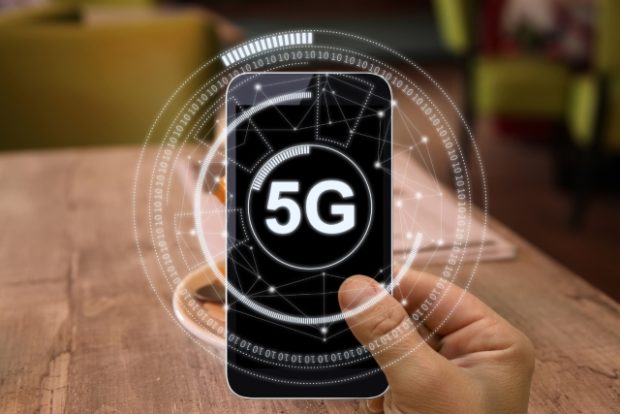Super fast 5G in the US still a work in progress

Image: IStock/alexsl via AFP Relaxnews
Marketing pitches in the United States are bullish on superfast 5G telecom networks, but they remain more of a promise than reality.
Promoters of the technology say it will bring such innovations as fast-thinking self-driving cars and rapid-fire video downloads.
And nationwide coverage with 5G could add $1.5 trillion to GDP in the next five years. But actually deploying it here is “very fragmented” given the maze of local regulations and agencies that telecom companies have to navigate across 50 states, said Jefferson Wang, head of 5G strategy at Accenture.
Approvals need to be sought and, typically, hearings held when it comes to where on streets, buildings, or other structures antennae can be mounted to relay telecom signals.
The first smartphones adapted for 5G were released by Samsung and Huawei in mid 2019.
Apple introduced its first 5G iPhone late last year, spurring telecom operators here to talk it up despite such speedy service not being widely available.
Gadgets and services synched to 5G networks were a major theme at the annual Consumer Electronics Show (CES) that wrapped up Friday after its first online-only event.
People using Verizon can get 5G connections, provided they are in the right city and in line of sight of antennae.
Verizon invested in a part of radio bandwidth where high-frequency signals move fastest but sacrifice travel distance and can be blocked by things such as walls or rain.
Rivals AT&T and T-Mobile have been investing in medium and low frequencies, which travel further but at relatively slower speeds.
‘Not sexy enough’
AT&T has taken to calling its enhanced 4G network “5G E” in a widely criticized marketing strategy. While smartphone screens might show connections stamped “5G,” speeds do not deliver.
“With 4G, that is like driving a Ferrari at rush hour,” Qualcomm senior vice president of engineering Alejandro Holcman said of using 5G smartphones on slower networks.
“You probably can do it but you need 5G to take full advantage of the capabilities of the devices,” he added, while speaking on a CES panel.
Innovators have been heralding wonders with 5G networks, with connections so rich and fast that remote surgery, for instance, will be a practical option.
Verizon boss Hans Vestberg boasted at CES that it had installed 5G in more than two dozen U.S. football stadiums this year, enabling fans to watch live play from a variety of camera angles and overlay information using augmented reality.
He also provided a glimpse at a project to allow people to examine 3D digital versions of Smithsonian Museum exhibits in their homes.
“The reality is you don’t need 5G for that. You just need an internet connection,” quipped Creative Strategies analyst Carolina Milanesi.
“I wish people would spend more time talking about the real benefit, which is the quality of service is going to be better. But that’s not sexy.”
Omniscient glasses
At the outset, 5G networks taking root first in metro areas risk reinforcing the disparity between ample telecommunication service in city centers and rural communities where even slow wireless connections are not reliable.
Some 18% of the U.S. population does not even have access to broadband internet, according to Elemental Content consultant John Penney.
Making 5G wireless service ubiquitous and affordable in the U.S. would be transformative when it comes to remote learning, telemedicine and more, Penney maintained.
Applications of 5G are expected to shine early in manufacturing, with private networks used to run “smart” factories.
It will be tougher to impress consumers accustomed to video games, 4K films streamed on demand, and virtual assistants at their beck and call.
But 5G could free people from reliance on smartphones, infusing software smarts and internet capabilities into more objects in a step toward “ambient computing.”
For example, security cameras will be able to scan thousands of faces in real time to identify wanted criminals and alert authorities, suggested Holcman.
Watches, headphones, eyeglasses or other accessories synched to powerful computing in the internet cloud could tend to needs or tasks now done on smartphones.
“What if we are able to find new devices that actually unlock ourselves from our smartphone,” Wang said. “Like my glasses telling me ‘Hey, that’s Melissa,’ we spoke three years ago at CES and she’s from Boston.” JB
RELATED STORIES:
Black Mirror? Microsoft eyes bringing dead people back as chat bots
Filipino satellite makers arrive in Japan for testing phase of CubeSats Maya-3, Maya-4